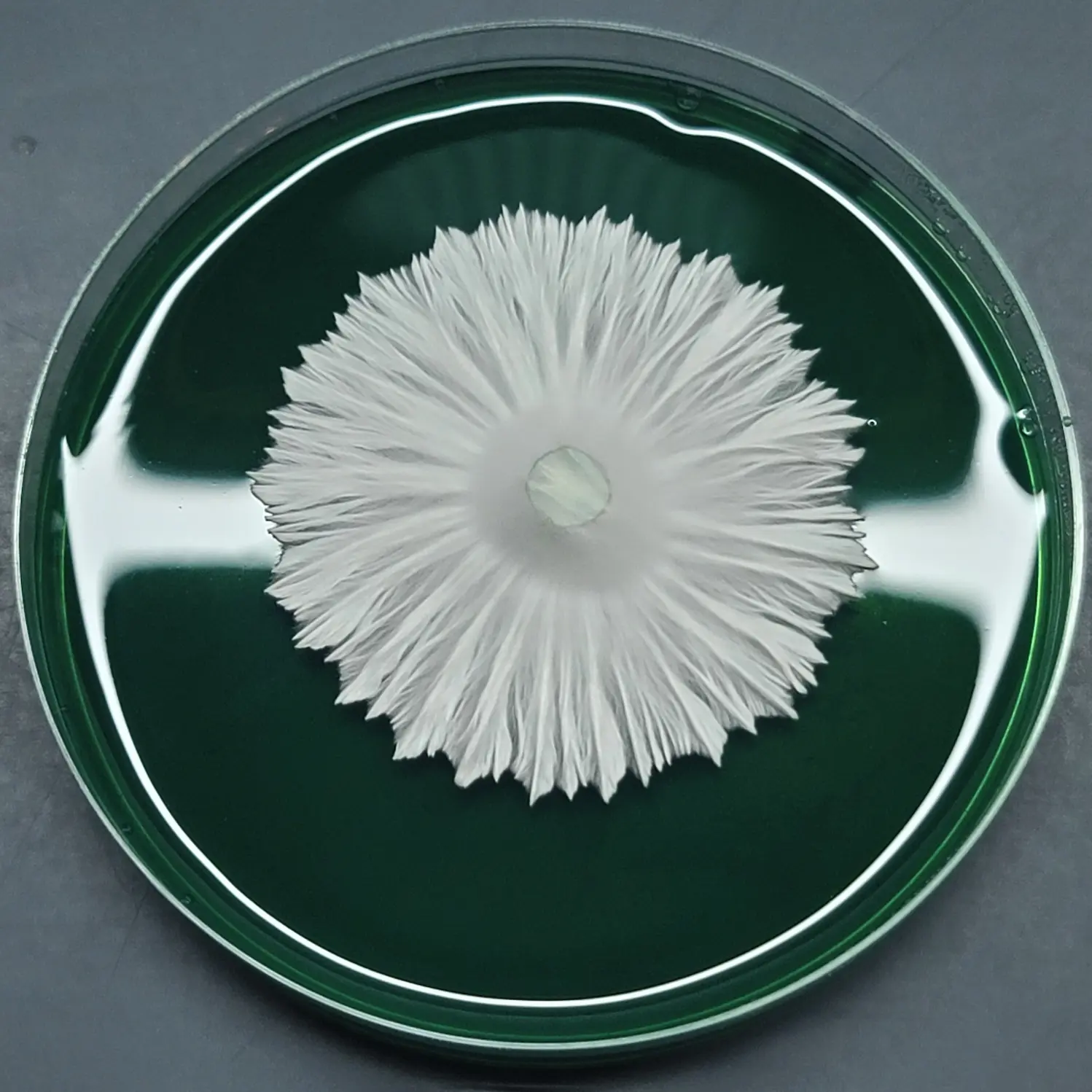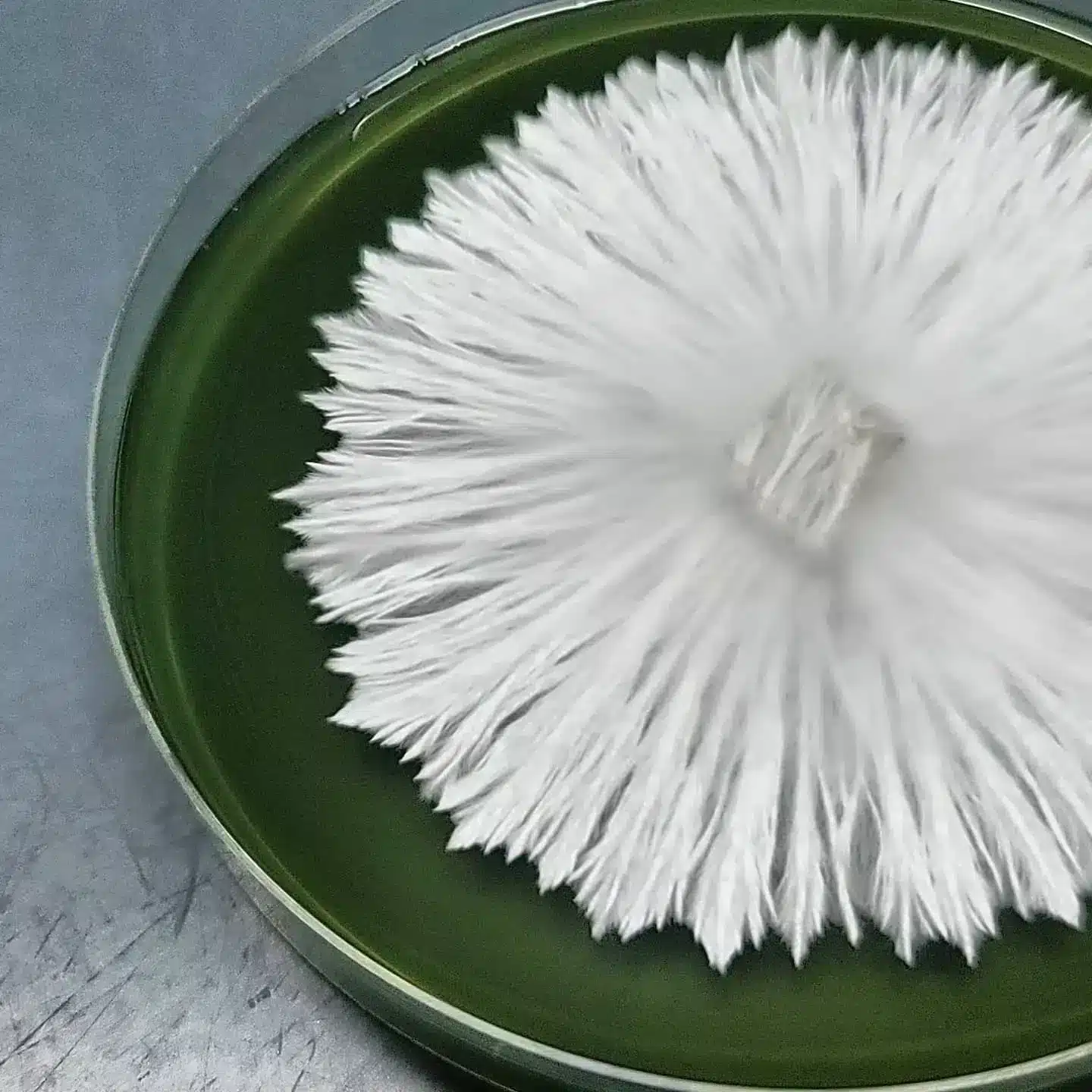Using Agar Premix Media
How to Prepare Your Own Agar Plates for Fungal Research
How to: Using Agar Premix
Preparing your own agar plates is a fundamental skill in mycology. With Bas Mycology’s Premium Agar Premix, the process is efficient, repeatable, and suitable for gourmet, medicinal, and exotic fungi. This step-by-step guide will help you create clean, sterile media for spore germination, mycelium expansion, or microscopy.

Supplies You’ll Need for Using Agar Premix
- Agar Premix Powder
- Media Bottle (1L recommended)
- Pressure Canner (Presto or equivalent)
- Magnetic Stir Rod and Stir Plate
- Infrared Thermometer
- Digital Scale and Scoop
- Sterile Petri Dishes
- Still Air Box or Flowhood
How to Using Agar Premix
- Step 1: Measure Your Media
- Weigh 50 grams of agar premix per 1 liter of water.
- Add the powder to a clean media bottle filled with distilled water.
- Step 2: Mix the Solution
- Seal the bottle and shake thoroughly.
- Use a magnetic stir rod inside the bottle for better mixing.
- Step 3: Sterilize in a Pressure Canner
- Place the sealed bottle in a pressure canner.
- Sterilize at 15 PSI for 30 minutes.
- Step 4: Allow to Cool
- Let the pressure canner cool naturally for 60–90 minutes.
- Do not force-cool, as this may cause media clouding or bottle stress.
- Step 5: Stir and Monitor Temperature
- Place the bottle on a magnetic stir plate and mix again.
- Check the temperature with an infrared thermometer.
- Target range: 125°F to 138°F (51°C to 59°C).
- Step 6: Pour Your Plates
- Work inside a still air box or in front of a flowhood.
Carefully pour the media into sterile Petri dishes.
Let plates solidify fully before sealing or storing.
Tips for Success
Always sterilize your tools and workspace before starting.
Use nitrile gloves and isopropyl alcohol to reduce contamination.
Store poured plates in clean, sealed bags for extended shelf life.
Let unused plates sit overnight to confirm they remain contamination-free.
Why Make Your Own Agar Plates?
Making your own agar gives you complete control over your lab inputs and helps you develop essential hands-on skills in sterile technique. Whether you’re cloning wild mushrooms, expanding cultures, or conducting research, homemade plates are a cost-effective and reliable foundation for success.
Ready to Start?
Browse our full range of Culture Media & Additives to order Premium Agar Premix, nutritional additives, and sterile lab tools to support your work.

Understanding Mycelium and Why Nutrition Matters
Mycelium is the living root system of fungi—a sprawling, intelligent network responsible for exploration, digestion, and communication. While it visually resembles plant roots, mycelium operates in an entirely different biological way. Rather than absorbing nutrients passively through root hairs like a plant, fungi actively interact with their environment by secreting powerful extracellular enzymes into the substrate around them. These enzymes act like molecular scissors, breaking down complex organic materials—such as lignin, cellulose, starches, proteins, and lipids—into simpler, soluble compounds that the fungal cells can then absorb.
This external digestion strategy allows fungi to thrive in a wide range of ecological niches, from rich forest floors to decaying wood and agricultural waste. But it also means that the surrounding environment must be carefully balanced. The quality, composition, and pH of the growth medium all influence how efficiently the mycelium can digest and absorb nutrients. Contaminants, incorrect nutrient ratios, or unstable pH can hinder growth or trigger defensive metabolic pathways, leading to stalling, mutation, or contamination susceptibility.
Bas Mycology’s Premium Agar Premix is formulated to match the nutritional needs of actively growing mycelium. We use bioavailable sugars, proteins, and buffering agents that support aggressive colonization and structural development. Whether you’re growing lion’s mane, oyster, or medicinal species, healthy mycelium leads to stronger fruiting bodies; and it all begins with the right nutrition in your plates.
This is why designing a clean, nutritionally balanced medium is so critical, especially in laboratory or production settings. A well-formulated substrate doesn’t just “feed” the fungi; it actively supports enzymatic activity, mycelial expansion, and the formation of strong, healthy networks. These networks ultimately determine the size, shape, and quality of the fruiting bodies they produce.
By understanding how mycelium feeds and thrives, mushroom cultivators can tailor their inputs to support optimal health from the earliest stages. Whether you’re growing gourmet species like lion’s mane and shiitake, or conducting research with rare exotics, it all starts with the medium, and how well it mimics the fungal world’s natural conditions.
